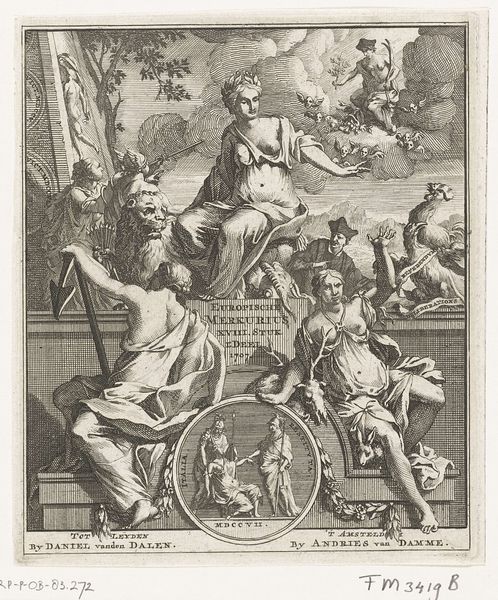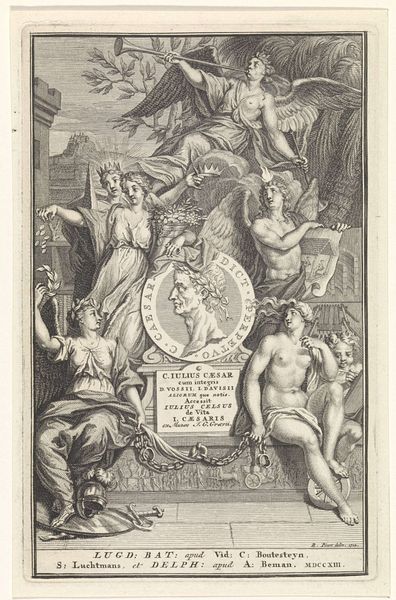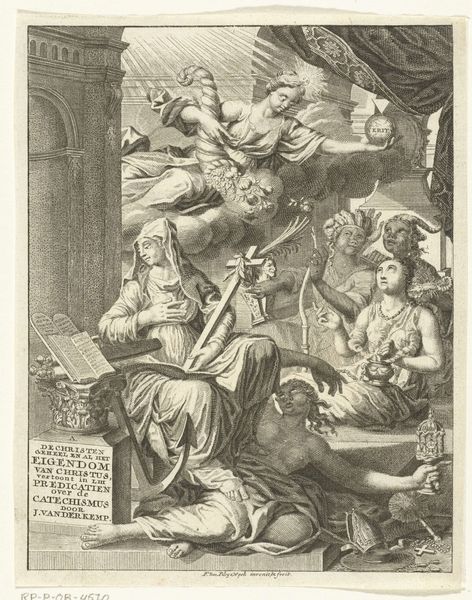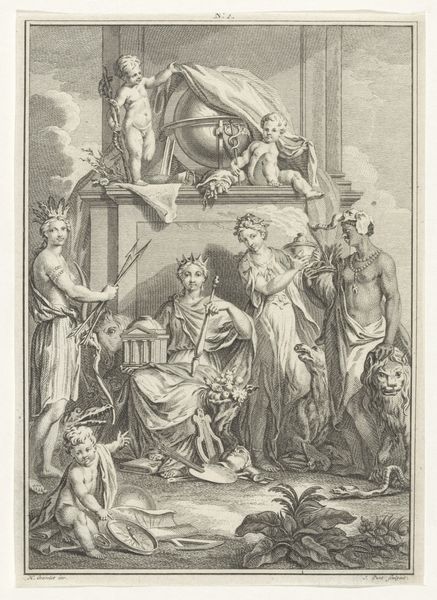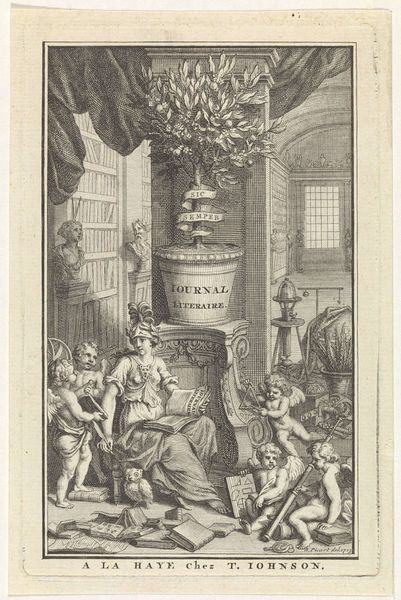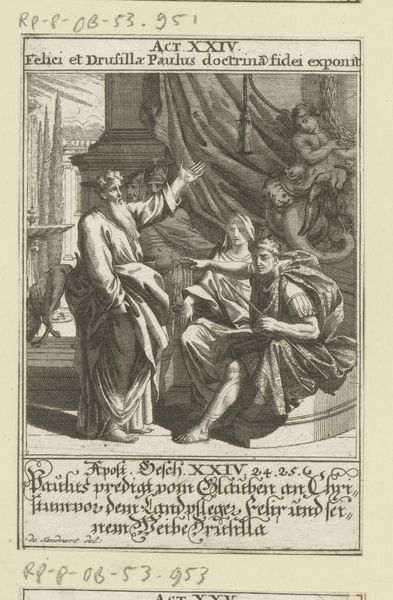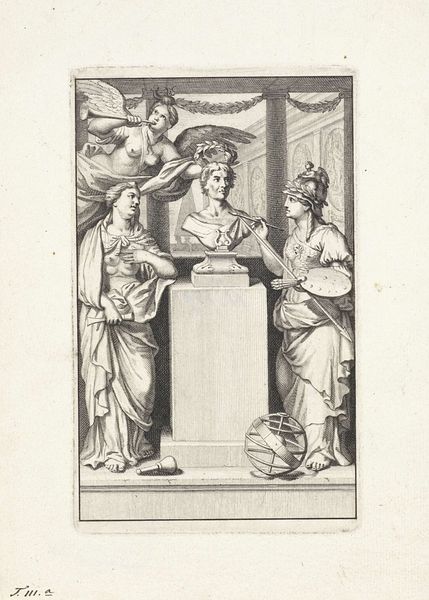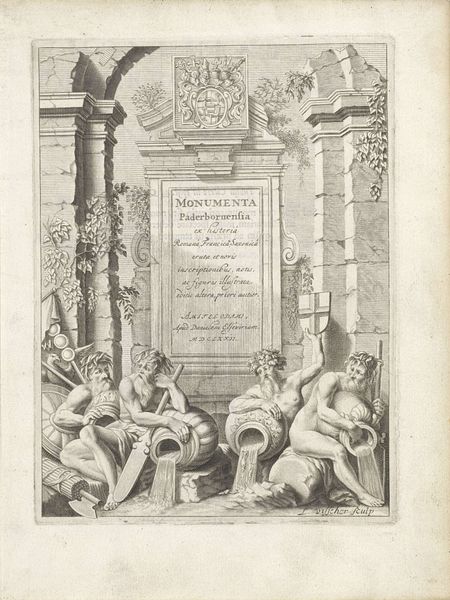
engraving, architecture
#
allegory
#
baroque
#
dutch-golden-age
#
form
#
line
#
cityscape
#
history-painting
#
engraving
#
architecture
Dimensions: height 166 mm, width 133 mm
Copyright: Rijks Museum: Open Domain
Joseph Mulder created this print, "Allegory on Architecture," in the Netherlands, sometime around 1729. It’s an etching, a medium that allowed for the wide dissemination of ideas during the Dutch Golden Age. Here, the personification of Architecture sits enthroned, surrounded by classical figures and symbols. The print isn’t just a celebration of building; it reflects a society deeply interested in order, perspective, and the control of space. We see an emphasis on mathematical precision. The background shows a carefully planned cityscape, complete with a dome and obelisk - structures evoking stability and power. This image wasn’t produced in a vacuum. It emerged from a culture where civic pride and global trade fueled architectural innovation. To fully understand this print, we can explore the history of Dutch urban planning, the role of guilds in architectural training, and the influence of classical ideals on Dutch design. Art becomes meaningful when we examine its social and institutional context.
Comments
No comments
Be the first to comment and join the conversation on the ultimate creative platform.
